09:18
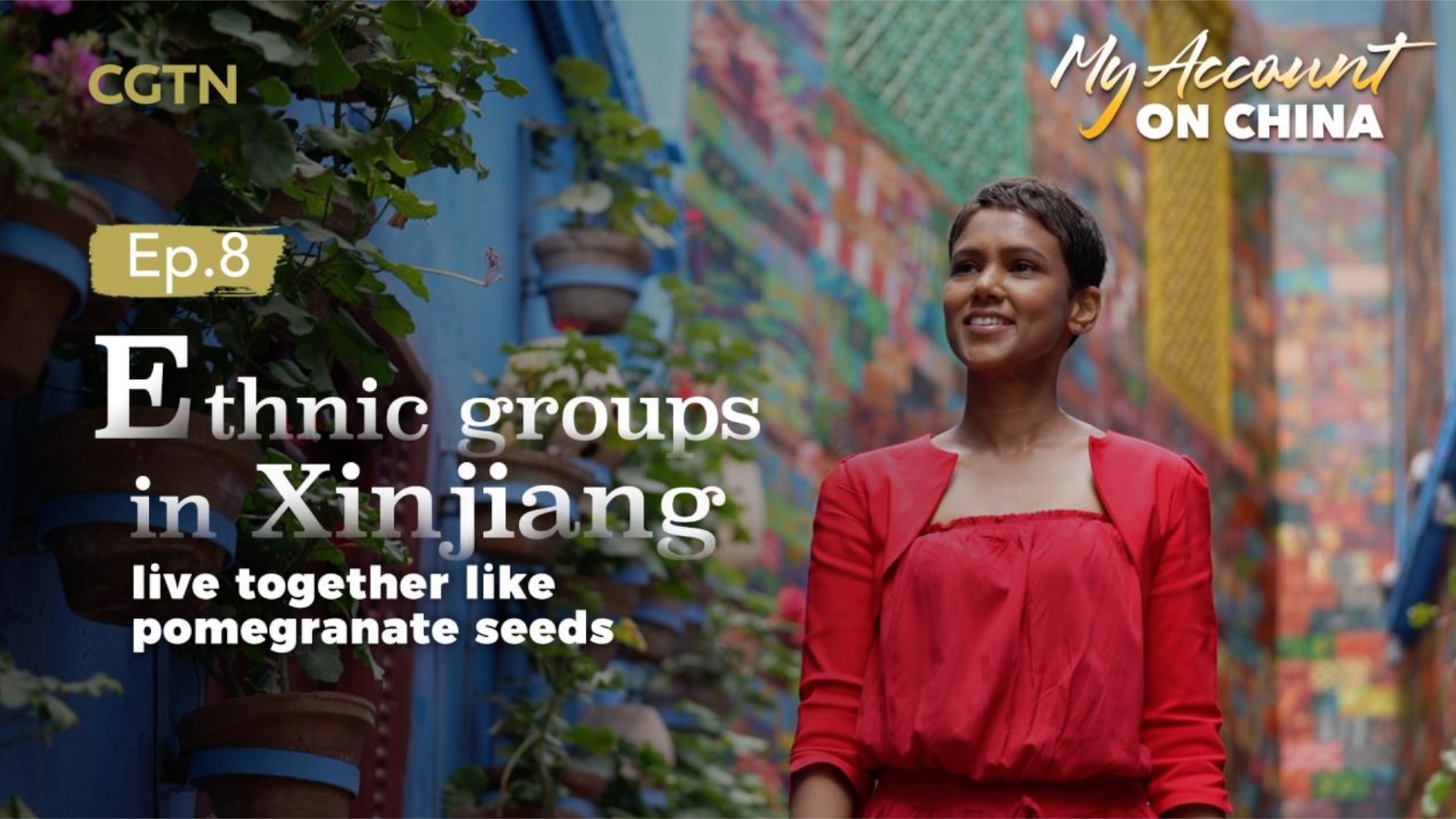
Home to nearly 26 million people, northwest China's Xinjiang Uygur Autonomous Region is a melting pot of multi-ethnic cultures. Over a dozen ethnic groups have lived there for generations. The Uygur is the largest group in the region, accounting for almost 45 percent of Xinjiang's total population.
The word "Uygur" means "unite" or "alliance," which is also a common value cherished by other ethnic groups in China.
Chinese people believe all its 56 ethnic groups should embrace each other like the seeds of the pomegranate. The big question is, how are they doing this? I traveled to Kashgar, a city famous for pomegranates, to find out the answer.
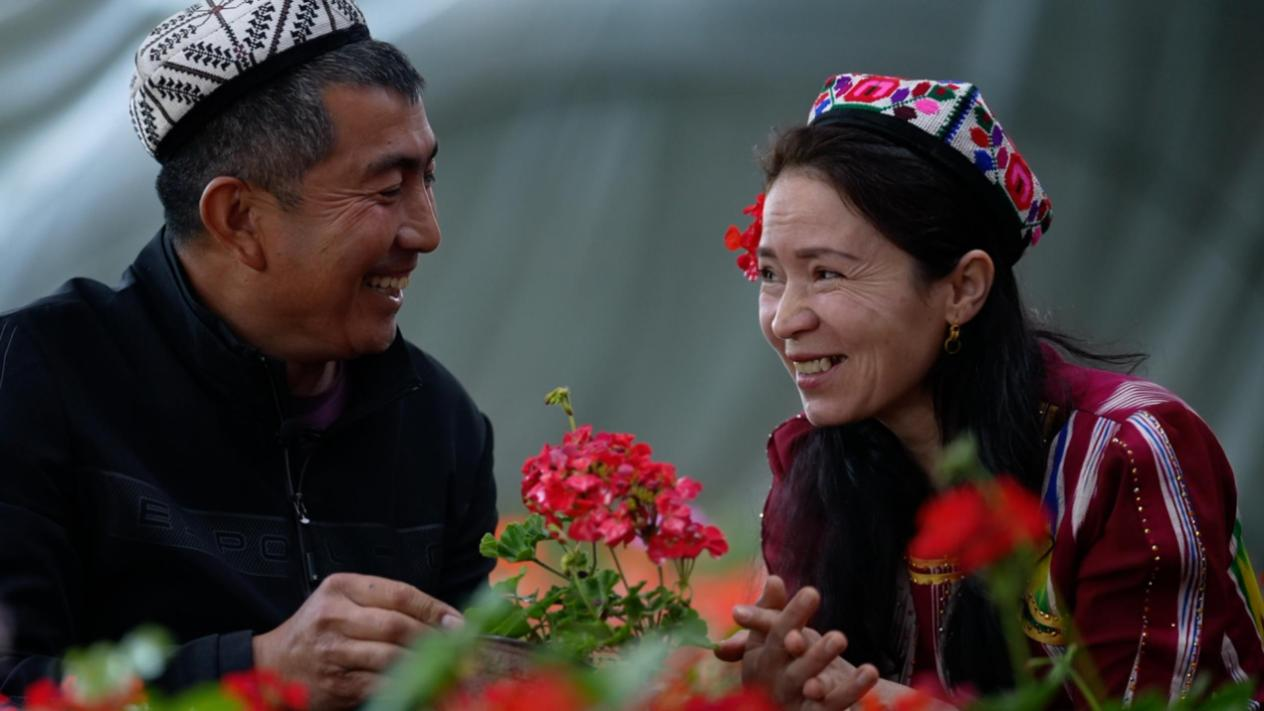
Abdukeyum Ruzi (L) and his wife Ayxamgvl Azez. /CGTN
Abdukeyum Ruzi (L) and his wife Ayxamgvl Azez. /CGTN
My first stop was a village in Shufu County, which Chinese President Xi Jinping visited in 2014. I had the pleasure of visiting a Uygur couple.
Abdukeyum Ruzi and his wife Ayxamgvl Azez invited me to tea. The couple told me they live in a community of ethnic diversity. They often go to their Han friends' home to celebrate Lunar New Year and invite friends over to celebrate their Corban Festival, a traditional Muslim holiday.
While we were chatting, the couple had a visitor from south China's Guangzhou City. Abdu introduced Xu Zhiqian as his "brother."
Xu has joined a program that helps boost exchanges between different ethnic groups in Xinjiang. The "pairing assistance" program was implemented in 2017 to support Xinjiang's socio-economic development.
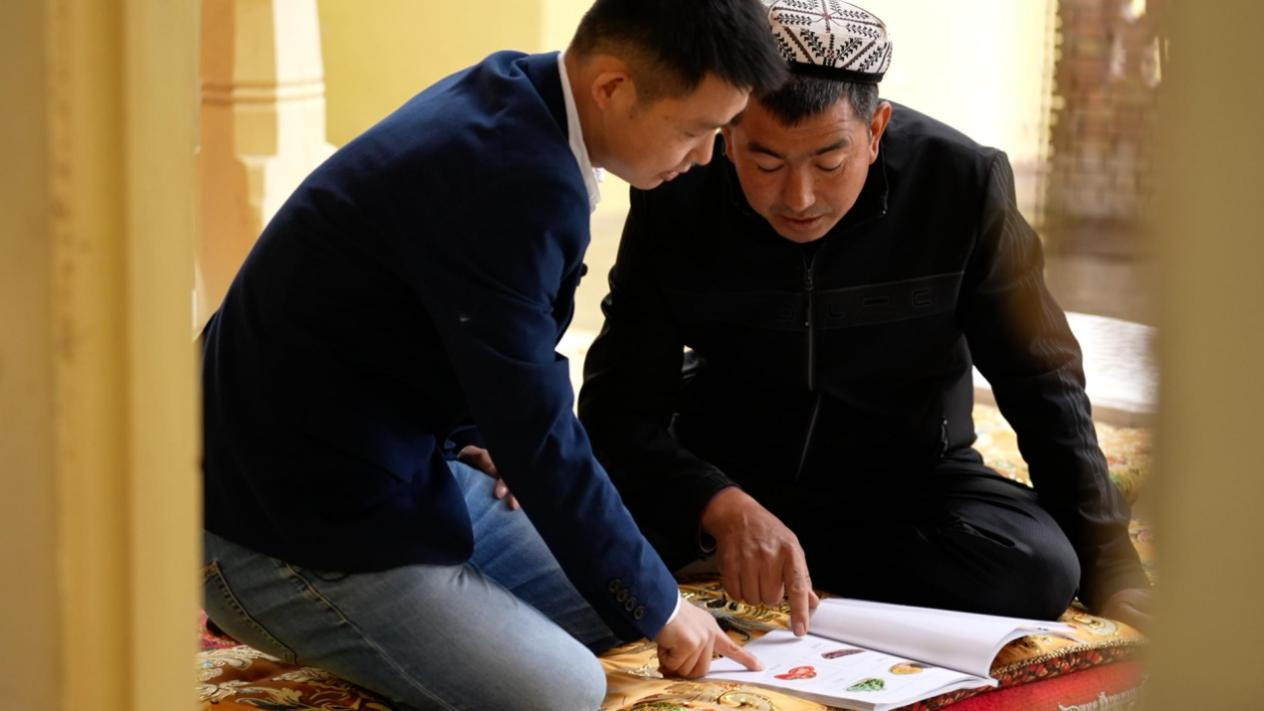
Abdukeyum Ruzi (R) learns Mandarin with his "brother" Xu Zhiqian. /CGTN
Abdukeyum Ruzi (R) learns Mandarin with his "brother" Xu Zhiqian. /CGTN
Xu often brings customers to Abdu's greenhouse to buy flowers. This is one of Abdu's main income sources. Xu told me that he feels like he's part of the family.
Abdu's biggest wish is to visit the capital, Beijing, one day. He wants to see the flag-raising ceremony at Tiananmen Square. He told me that he has been learning Mandarin with his "brother" Xu in the hope that he can master the language before his trip.
It was a remarkable program. At the core of this initiative was the pomegranate. In Id Kah, Xinjiang's largest mosque, a beautiful tapestry captures it all.
Mamat Juma, Imam of Id Kah Mosque, explained that the carpet's 56 pomegranate flowers represent the 56 ethnic groups in China. He pointed at a set of flowers and told me that the pattern means that ethnic Han and minority groups cannot be separated and that the bond between ethnic minorities is also inseparable.
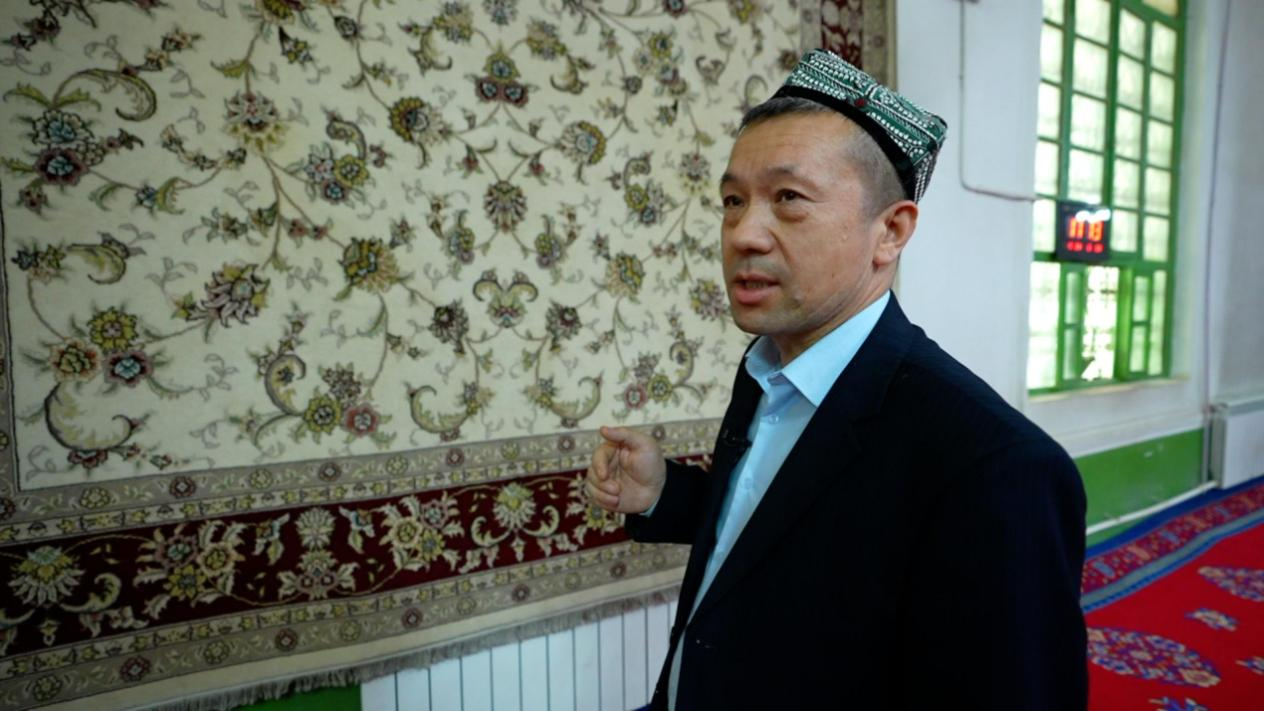
Mamat Juma, Imam of Id Kah Mosque, explains the significance of the famous pomegranate carpet. /CGTN
Mamat Juma, Imam of Id Kah Mosque, explains the significance of the famous pomegranate carpet. /CGTN
I wanted to see more. My next stop was a local school.
Speaking from my own experiences, I knew that the only way to cultivate ethnic unity was through education.
I spoke to Yao Hongyu, principal of Tuokezhake Central Elementary School. She explained the school's pomegranate seeds lesson, which teaches students the importance of ethnic unity and helps them understand their cultural differences.
Learning Mandarin, China's most commonly used language, is an integral part of this lesson. Yao told me that with Mandarin, kids can apply for higher education and other jobs across the country. It gives them better choices and more platforms to thrive.
Bilingual education has certainly given these children a head start. To date, 900 graduates have either enrolled in a college or found a job outside Xinjiang. The school also teaches its students to keep their culture and tradition alive.
Growing up in a multi-ethnic society like Singapore exposed me to new ways of doing things and fresh ways of looking at things. And I could relate to the efforts undertaken in Xinjiang to improve ethnic ties.
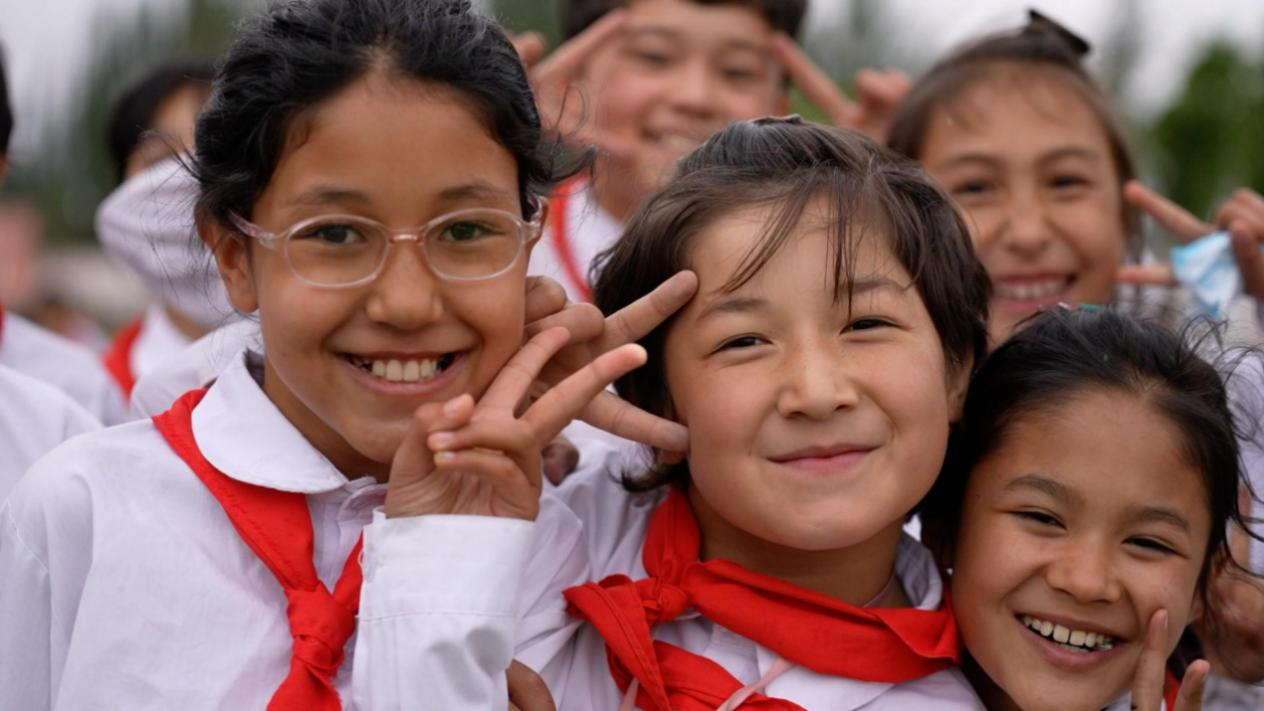
Kids at Tuokezhake Central Elementary School beam at us. /CGTN
Kids at Tuokezhake Central Elementary School beam at us. /CGTN
I headed up north to the regional capital, Urumqi, to learn more about job opportunities for ethnic groups. My final stop was Xinjiang's largest dry fruit company.
President Xi visited the Xinjiang Fruit Industry Group in 2014 and said he hopes companies can contribute more to boost the local economy. The president has always stressed that no single ethnic group should be left behind in pursuing a better life.
Zhai Kaiyuan, deputy general manager of the company, told me that minority employees account for a third of their staff and that they have played a very important role in planting, processing, sales and management.
I spoke to a few employees from different ethnic groups, including Kazak, Hui and Uygur, about their working experiences at this company. The workers told me they have about four to five ethnic groups in a workshop, and they get along very well.
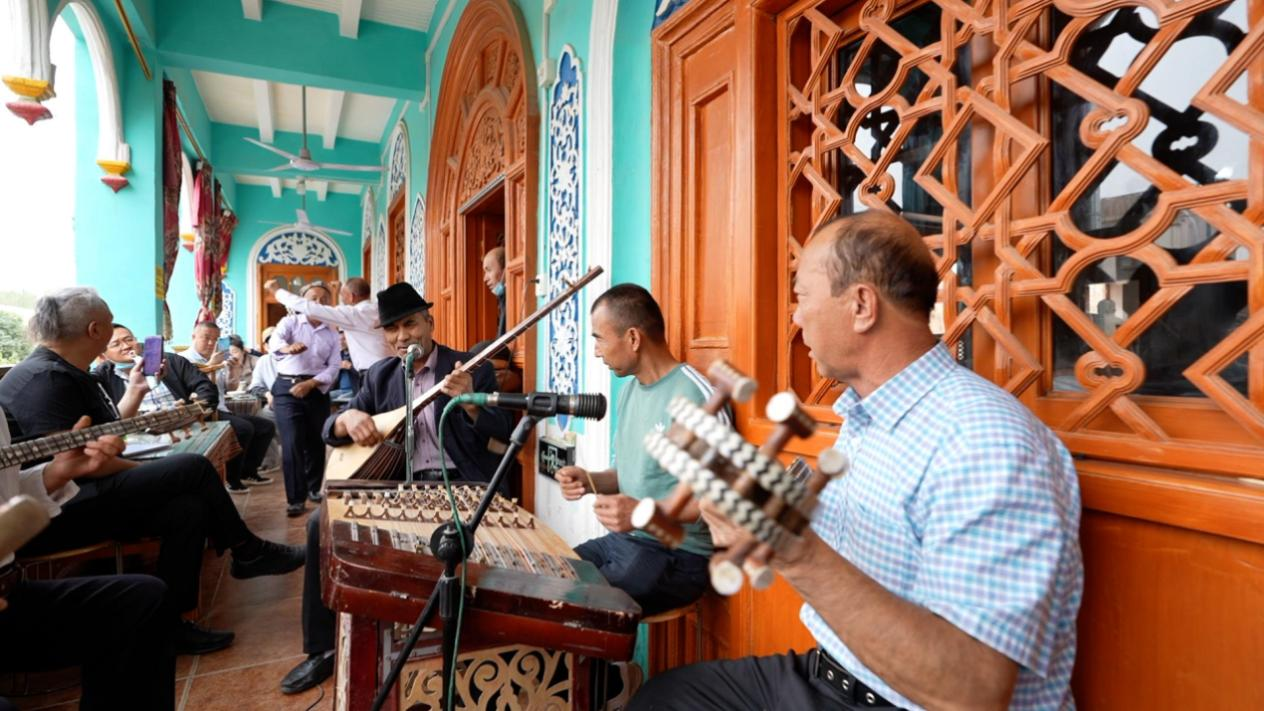
Ethnic minority groups sing and dance at a tea house in Kashgar. /CGTN
Ethnic minority groups sing and dance at a tea house in Kashgar. /CGTN
Today, Xinjiang's annual disposable income per capita has reached over 26,000 yuan ($3,900), nearly double compared to 10 years ago.
It was a delight to see people from different ethnic groups living peacefully in Xinjiang. Unfortunately, my "journey to the west" was too short. I wish there were more time to see other places and experience more cultures and customs. Perhaps, I'll visit Xinjiang again when the pomegranates are in season.
(CGTN reporters Li Jiejun, Wu Guoxiu, Sun Tianyuan and Wan Hongjia also contributed to the story.)
(Cover: CGTN Anchor Gasthoori Manickam in Kashgar, Xinjiang Uygur Autonomous Region. /CGTN )

